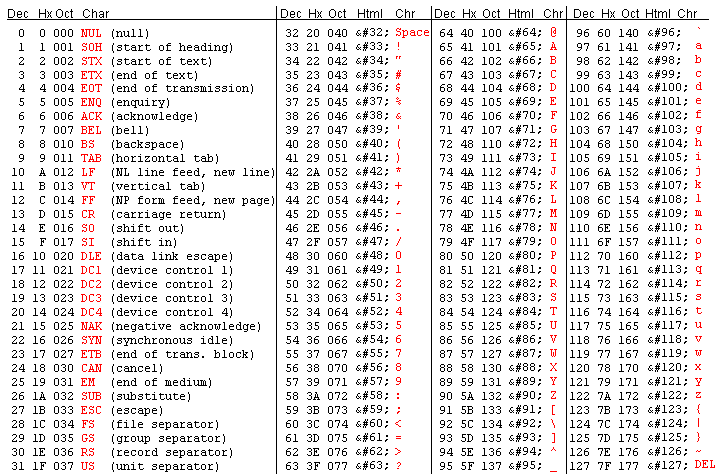ascii
ASCII
ASCII (American Standard Code for Information Interchange) is a one byte code used to represent characters. Standard ASCII uses the low 7 bits and can represent 128 (27) characters. The first 32 characters (00-1F hex ) are not printable - they are control characters. There are 96 printable characters.An example of ASCII Art!

ASCII Encoding Example:
The binary code for the letter 'D' is 01000100. The hex value is 44 and in decimal it is 68 (4x16 + 4x1)
4416 = 010001002 = 0 + 26 + 0 + 0 + 0 + 21 + 0 + 0 = 6410 + 410 = 6810
More on ASCII.
EXTENDED ASCII
The eighth bit (high bit, leftmost bit, bit 7) of an ASCII byte can be mapped to one of many possible "code pages" (extended character set) of which there are many. Code pages include codes for Hebrew, Greek, Arabic, Cyrillic, Chinese, Japanese or whatever symbol set you define, BUT you can use one code page at a time. This means that you can't use Japanese characters and Chinese characters at the same time.
The IBM-PC extended ASCII character set ( Code Page 437): [More on Code Pages]
